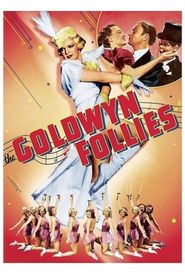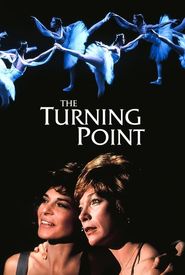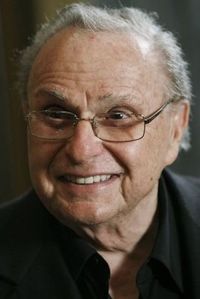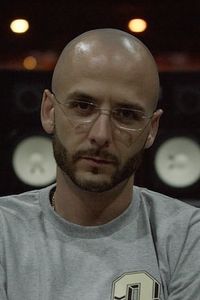George Balanchine, a celebrated Georgian-American ballet dancer and a towering figure in the world of 20th-century choreography, left an indelible mark on the art form, earning him widespread recognition as the pioneering force behind the establishment of American ballet. For over three decades, Balanchine steered the New York City Ballet, his artistic vision and creative genius shaping the company into a global phenomenon, and his legacy continues to inspire and influence generations of dancers, choreographers, and ballet enthusiasts alike.
Georgy Melitonovich Balanchivadze, the renowned choreographer, was born to Meliton Balanchivadze, a prominent Georgian composer who would later serve as the Culture Minister of the first Georgian Democratic Republic, a significant milestone in the country's rich cultural heritage.
From a tender age of five, Balanchine embarked on a musical journey, studying piano with his father, who played a pivotal role in nurturing his artistic talents. This early exposure to music would later influence his work in ballet.
In 1913, Balanchine's passion for dance led him to the prestigious Imperial Ballet School in St. Petersburg, where he was accepted into the ballet class, marking the beginning of his illustrious career in the world of dance.
In the year 1914, a significant milestone was reached in the life of the renowned choreographer, George Balanchine, as he made his initial stage appearance with the prestigious Mariinsky Imperial Ballet, taking on the role of Cupid in the iconic ballet "The Sleeping Beauty", a masterpiece composed by the illustrious Pyotr Ilyich Tchaikovsky.
Following his stage debut, Balanchine continued his educational pursuits, graduating as a classical ballet dancer in 1921, simultaneously honing his skills in piano and composition at the esteemed St. Petersburg Conservatory.
Subsequently, from 1921 to 1924, Balanchine joined the ranks of the State Academic Theatre of Opera and Ballet in Petrograd, now known as St. Petersburg, where he further refined his craft as a dancer.
In the year 1924, a significant turning point occurred in the life of George Balanchine, as he emigrated from his native Russia, accompanied by his first wife, the talented ballerina Tamara Geva, whom he had the pleasure of marrying in 1923. This marked the beginning of a new chapter in his illustrious career, as he was soon to audition for the esteemed impresario Sergei Diaghilev, founder of the renowned "Russian Ballet". Impressed by Balanchine's skills, Diaghilev extended an offer for him to join the company as a professional dancer, a role he was thrilled to accept. However, fate had other plans, as a knee injury forced Balanchine to reluctantly bid farewell to his dancing career, a decision that would have a profound impact on the trajectory of his artistic endeavors. Undeterred, Diaghilev, recognizing Balanchine's exceptional talent, opted to employ him as a choreographer, a move that would prove to be a masterstroke. Over the course of the next five years, from 1924 to 1929, Balanchine created an impressive nine major ballets, in addition to choreographing numerous smaller productions, including the iconic "L'Enfant et les Sortileges" by the celebrated composer Maurice Ravel, as well as "Apollon Musagete" and "Le Chant du Rossignol" by the incomparable Igor Stravinsky.
Following the passing of Diaghilev, Balanchine navigated a period of uncertainty, during which he made a brief appearance as a dancer in the 1929 production of "Dark Red Roses", alongside Lydia Lopokova, a renowned ballerina who had previously been a part of Diaghilev's esteemed company.
He subsequently relocated to Monte Carlo, where he created three ballets for the prestigious "Ballets Russes de Monte Carlo" production, featuring the esteemed Russian ballerina Tamara Toumanova.
In the year 1933, a pivotal moment in the career of the renowned choreographer George Balanchine, he embarked on a new venture by co-founding "Les Ballets" alongside Boris Kochno, the last private secretary of the illustrious Sergei Diaghilev, and the two collaborated to stage performances in the vibrant city of London.
It was during this time in London that Balanchine had the pleasure of making the acquaintance of the young and ambitious American impresario, Lincoln Kirstein, who would go on to play a significant role in shaping the future of American ballet.
Kirstein, impressed by Balanchine's artistry and vision, extended an invitation to the choreographer to establish a ballet company in the cultural hub of New York City.
Balanchine, however, was resolute in his determination to lay the groundwork for a ballet school before committing to the creation of a professional company, and thus the School of American Ballet came into being, serving as a vital incubator for the development of future generations of American ballet dancers.
In the year 1935, a pivotal moment in the life of the renowned choreographer George Balanchine, he embarked on a new venture by co-founding the American Ballet, a company that would go on to become the resident troupe at the esteemed Metropolitan Opera House for a brief yet significant period of time, spanning from 1935 to 1938. During this tenure, the American Ballet flourished under Balanchine's artistic direction, showcasing his unique vision and choreographic expertise.
However, the partnership between the American Ballet and the Metropolitan Opera eventually came to an end in 1938, marking a turning point in Balanchine's career. Undeterred, he decided to take his talented dancers to the West Coast, specifically to the bustling city of Hollywood, where he aimed to capitalize on the growing popularity of film and expand his artistic horizons.
In Hollywood, Balanchine continued to hone his craft as a ballet choreographer, lending his expertise to several movie productions. Moreover, he also saw an opportunity to promote his second wife, the beautiful and talented Vera Zorina, by casting her in leading roles in various films. This marked a new chapter in Balanchine's career, as he navigated the intersection of ballet, film, and personal life with characteristic elegance and flair.
In the year 1946, a pivotal moment in the history of dance unfolded as George Balanchine, a renowned choreographer, and Lincoln Kirstein, a prominent arts patron, joined forces to establish the Ballet Society, a pioneering endeavor that would eventually evolve into the esteemed New York City Ballet in 1948.
Under the visionary leadership of Balanchine, the company would go on to become a beacon of innovation in the world of ballet, with the maestro himself choreographing an impressive array of productions that would leave an indelible mark on the art form.
Among his most notable creations were the five-part series Great Performances: Dance in America, a groundbreaking television program that premiered on PBS in 1976, and the film The Turning Point, a cinematic masterpiece released in 1977 that showcased Balanchine's mastery of the medium.
Throughout his illustrious career, Balanchine's tireless dedication to his craft and his unwavering commitment to pushing the boundaries of what was possible in ballet helped to cement his status as one of the most important and influential choreographers of the 20th century, leaving a lasting legacy that continues to inspire and influence generations of dancers and choreographers to this day.
Balanchine's 1954 staging of Tchaikovsky's iconic "The Nutcracker" ballet marked the beginning of a long-standing tradition of annual holiday performances of this beloved classic.
In 1993, his original choreography was reimagined and re-created for the big screen in the film adaptation of "The Nutcracker", a cinematic interpretation of the beloved ballet that has been enchanting audiences for generations.
George Balanchine was a renowned choreographer and artistic director of the New York City Ballet, credited with redefining the art of ballet in the 20th century.
Born in 1904 in St. Petersburg, Russia, Balanchine began his dance training at the age of 9, studying at the Imperial School of Ballet.
He emigrated to the United States in 1933, where he founded the School of American Ballet and later became the co-founder and artistic director of the New York City Ballet.
Throughout his illustrious career, Balanchine choreographed over 400 ballets, including some of the most iconic and enduring works in the classical repertoire, such as "Serenade", "Jewels", and "Symphony in C".
Balanchine's contributions to the world of dance are immeasurable, and his legacy continues to inspire and influence generations of dancers, choreographers, and audiences alike.
Despite his passing in 1983, his work remains an integral part of the cultural heritage of dance, and his ballets continue to be performed and admired around the world.
Balanchine's re-creation of "The Nutcracker" in 1954 not only cemented his reputation as a master choreographer but also helped to establish the ballet as a beloved holiday tradition.
The 1993 film adaptation of "The Nutcracker" brought Balanchine's choreography to a wider audience, introducing the ballet to a new generation of dance enthusiasts and cementing its place as a timeless classic.
Balanchine's innovative and groundbreaking choreography continues to be celebrated and emulated, and his legacy as one of the most influential choreographers of the 20th century remains unchallenged.
George Balanchine, a renowned choreographer and artistic director, embarked on a romantic journey, marrying four times, each union with a beautiful ballerina. Despite his numerous relationships, he never had any children. His life came to a close on April 30, 1983, in New York City, where he was laid to rest in Oakland Cemetery, located in the picturesque town of Sag Harbor, New York.





























